Kinner Kailash peak, standing at 6,050 meters, is located in the Kalpa region of Kinnaur district. The Parikrama (circuit) route encircles the Kinnaur Kailash Shivling peak, which is about 4,800 meters high and one of several peaks along the Kinnaur Kailasha mountain range.
Kinner Kailash circuit trek offers magnificent views of Kinnaur Kailash range peaks including Raldang (5499m) and Jorkanden (6473 meters).
The region is hemmed in by Indo-Tibetan border and peaks of Zanskar and Greater Himalayan range on its north-eastern side. Dhauladhar range seperate it from Uttarakhand on the southern side .
Kinnaur’s culture and traditional practices are heavily influenced by Tibetan Buddhism. The trek is a great opportunity to witness the striking intersection of Hinduism and Buddhism.
Kinner Kailash Yatra 2025
The Kinnaur Kailash Yatra 2025 has been officially closed by the district administration — due to inclement weather conditions, frequent rockfalls, and persistent fog in the region — on August 19th 2025.
In 2024, the Kinner Kailash Yatra was held from August 1 to August 26. In 2025, the Yatra is scheduled to begin on July 15 and continue until August 30. However, the administration may postpone or discontinue the Yatra in case of extreme weather conditions, such as frequent landslips or heavy rainfall.
This year, 350 Yatris can register daily for the Kinnaur Kailash Yatra. Of these, 175 slots are reserved for online registration, 125 for offline registration, and 50 are allocated to Adventure Tour Operators.
For the first time, an age criterion has been introduced for the Kinnaur Kailash Yatra registration: only individuals aged between 16 and 60 years are eligible to register.
Journey to the Kailasha of Kinnaur
Kinnaur Kailash Yatra is usually scheduled for the last of July month or the first week of August month, but Parikrama of Kinnaur Kailash is doable in the month of May and June also. Before departing, local tour operators—registered at tourism department, DC office Kinnaur — are mandated to submit the list of trekkers planning to hike the Kailash Shivling route at nearest police station.
The route to the Kailash summit is steeply inclined, and it gets almost perpendicular just after Tangling village. It takes around 8-9 hours from Tangling village to reach the next pit stop i.e Maling Khata meadows.
The Yatra or pilgrimage to the Kinnaur’s holy Shivling is unlike the Shrikhand Mahadev or Manimahesh Kailash where the route ascends gently in zigzag fashion.
Routes to Kinner Kailasha Shivling
There are three routes to reach the apex point of Kinnaur Kailash Shivling trail.
- Tangling- Maling Khata Meadows – Gufa (cave shelter) – Sorang (Parvati Kund) – Kinner Kailash (the most frequently trodden trail).
- Purbani village – Kibber (Purbani Kanda) – Dangloden – Kinner Kailash Shivling.
- Ribba village – Fuliach Kanda meadows – Dunsarang campsite – Gufa – Kinner Kailash.
All three trails passes through villages, apple orchards, vineyards (Ribba is renowned for grape cultivation and Angoori — the grape wine).
The Tangling-Maling Khata-Gufa trail is a quintessential ascent.
After the Tangling village — the last point of civilization — there is an 8-9 hours of sheer climb through dense forests of Fir and Juniper trees till Forest Department Sarai (Shelter).
Most people discontinue their hike at or nearby Sarai, camp on the meadows, and stop for the night halt. If you hold up there through the night, start early in the morning, as you need to cover the remaining boulder-ridden terrain—which is the most difficult part of the Kinner Kailash Yatra trail—and descend back to the base.
For the 2025 Kinnaur Kailash Yatra, the district administration has approved the second route: Purbani-Kibbar Kanda-Dangloden-Gufa-Kinnaur Kailash summit. This new route will complement the traditional Tangling-Meling Khata-Gufa-Kinnaur Kailash path. While the official Yatra dates are from July 15 to August 30, the Purbani-Kinnaur Kailash route is expected to open after July 25.
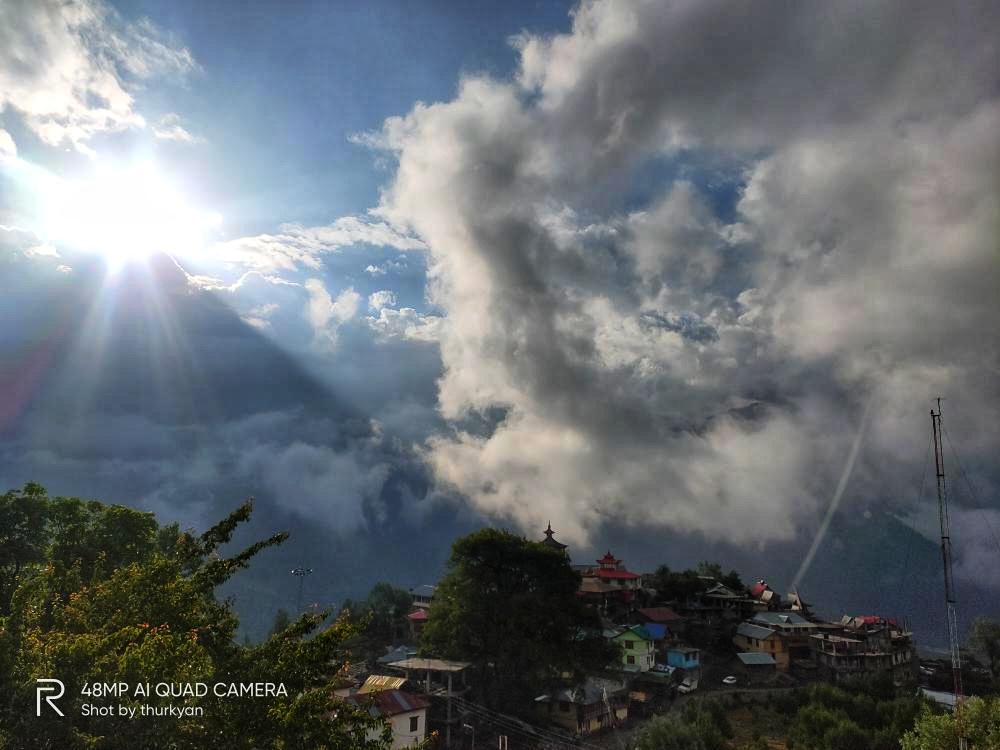
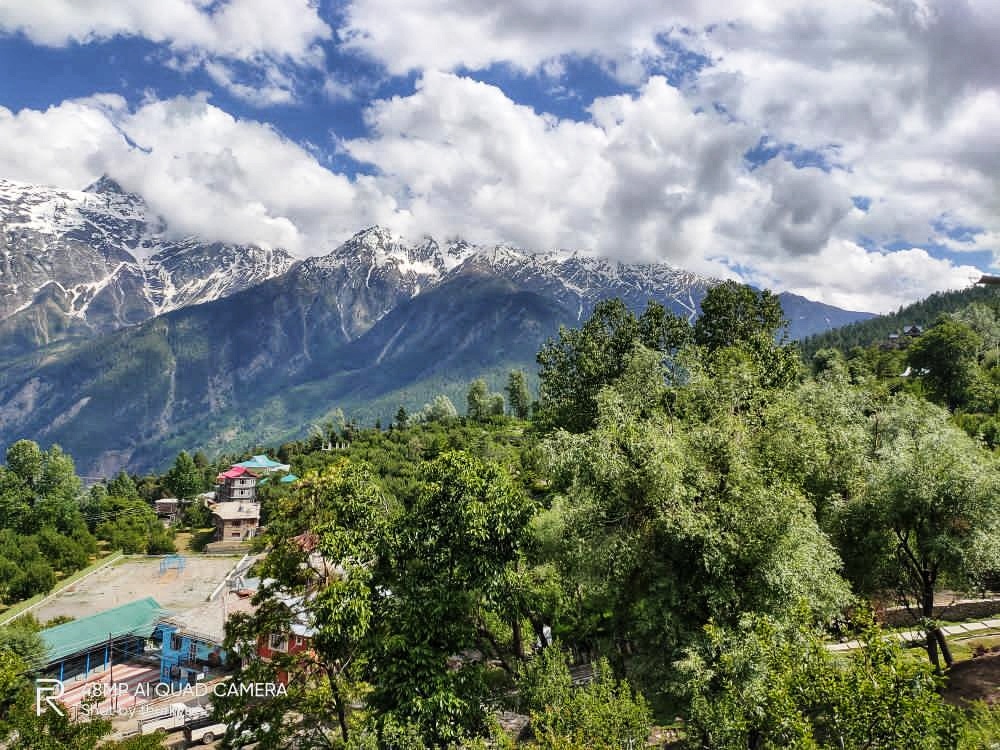

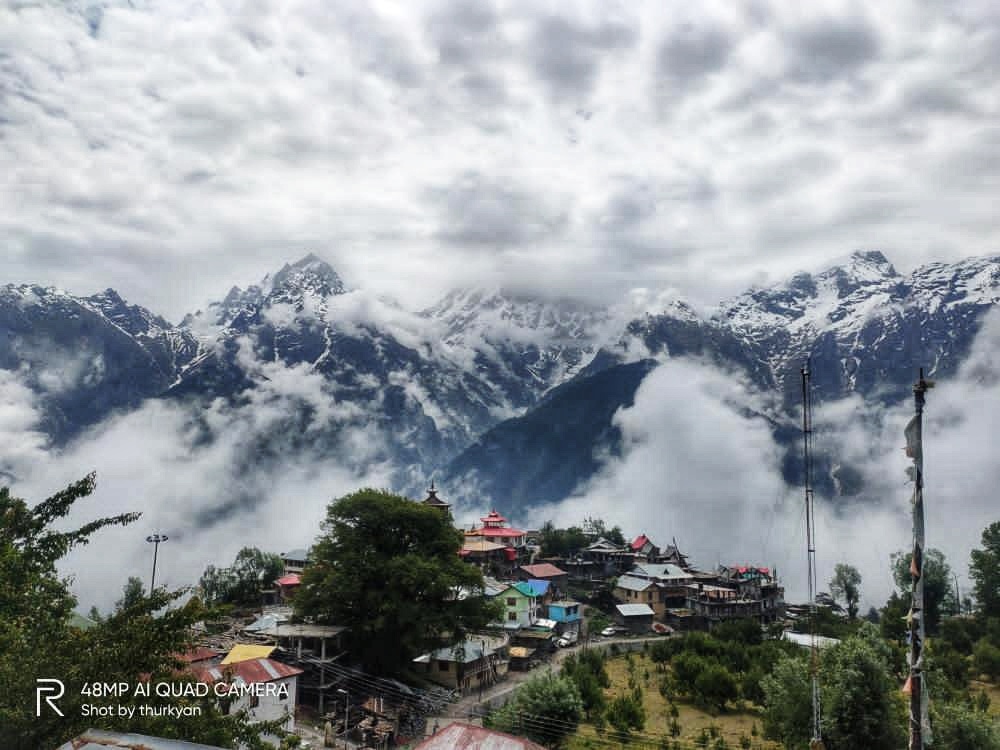
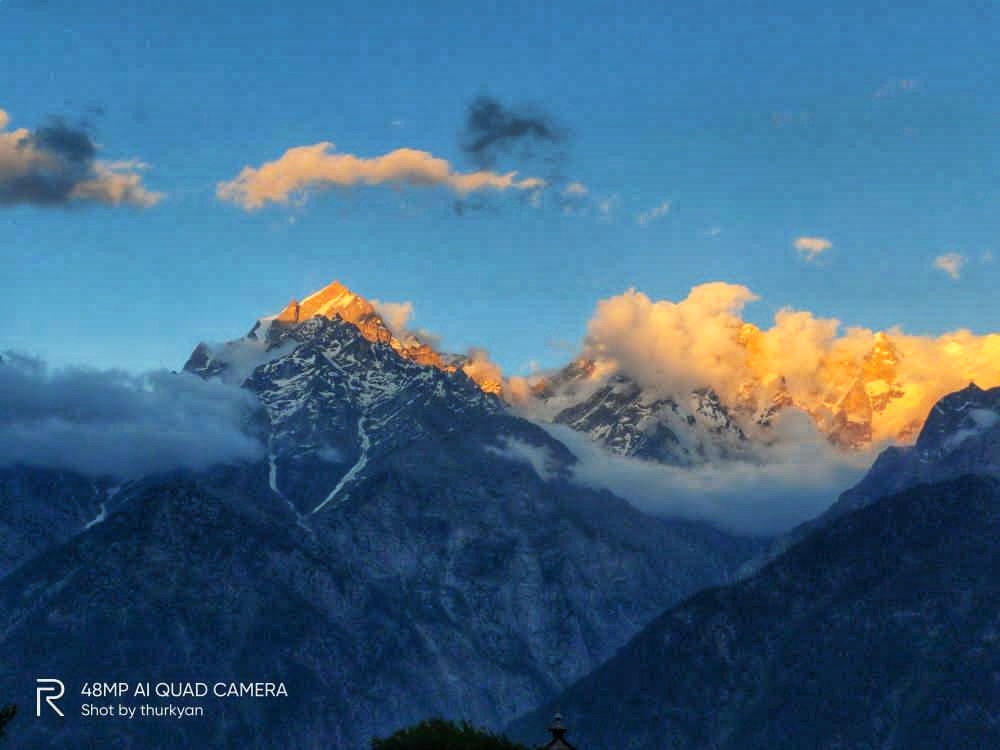

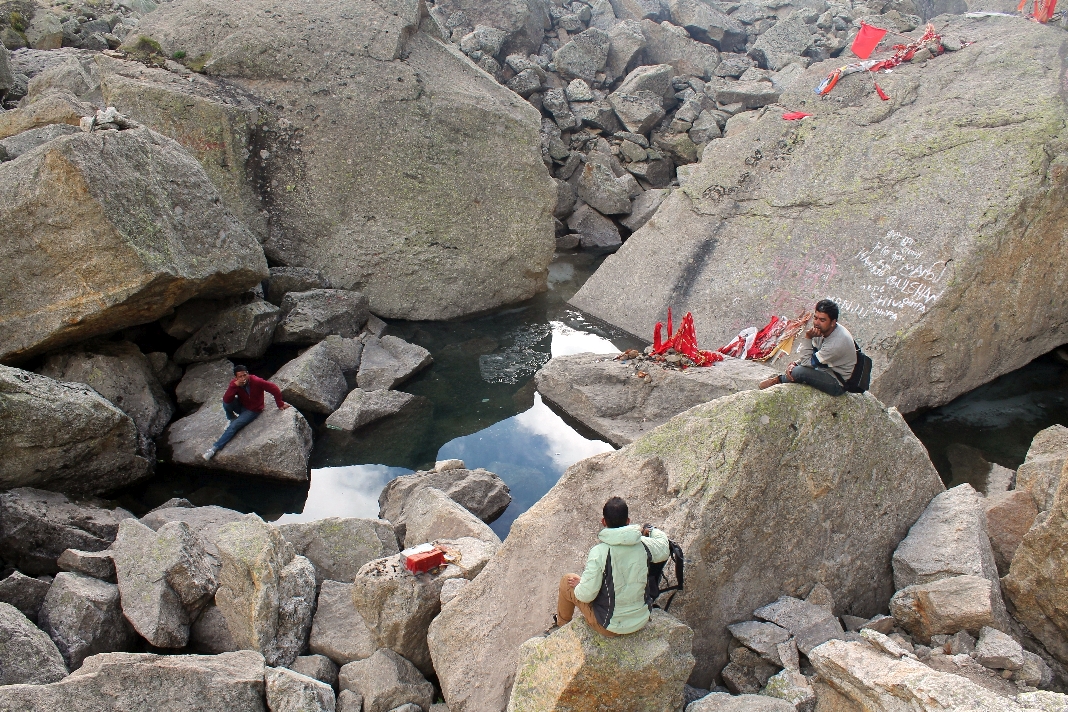
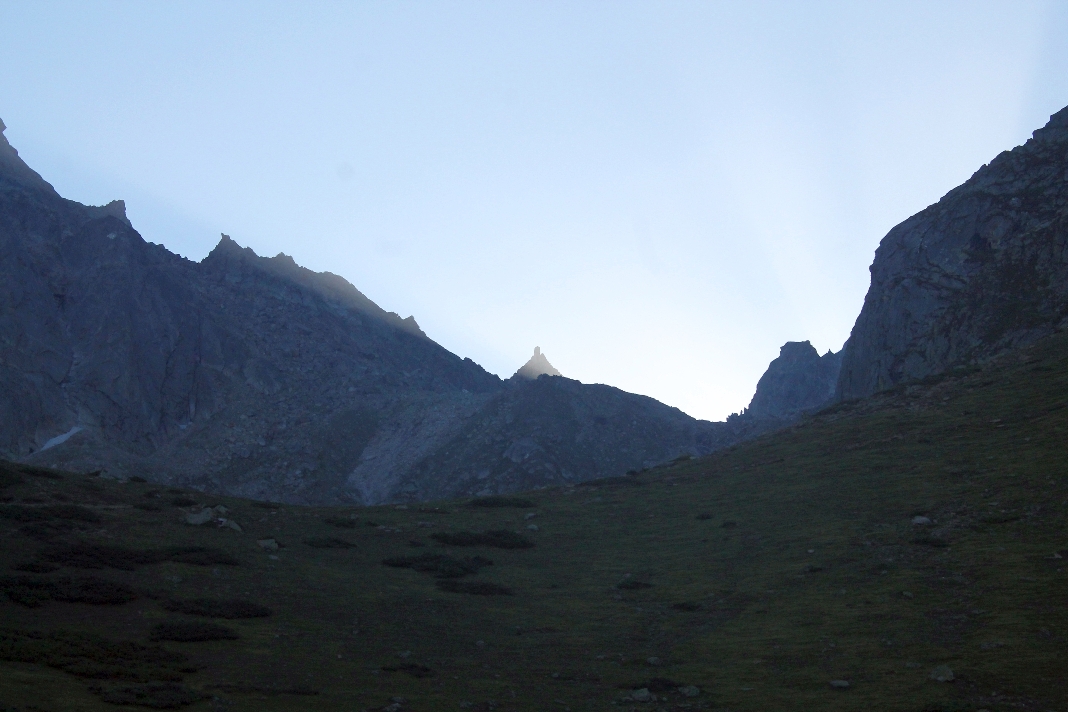

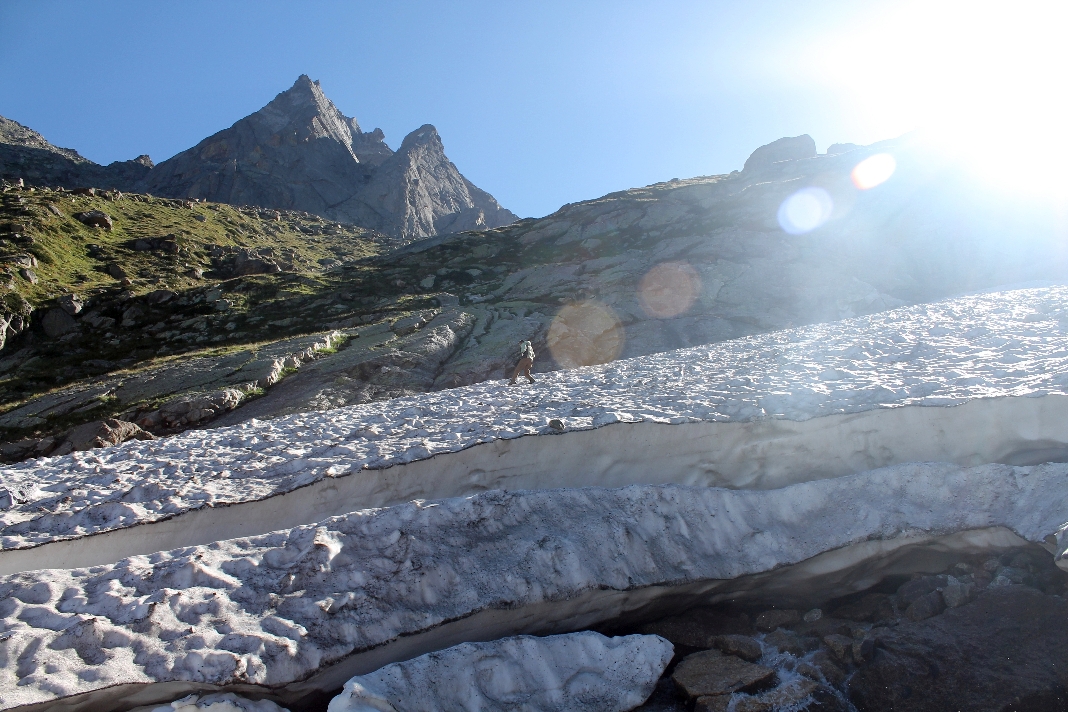
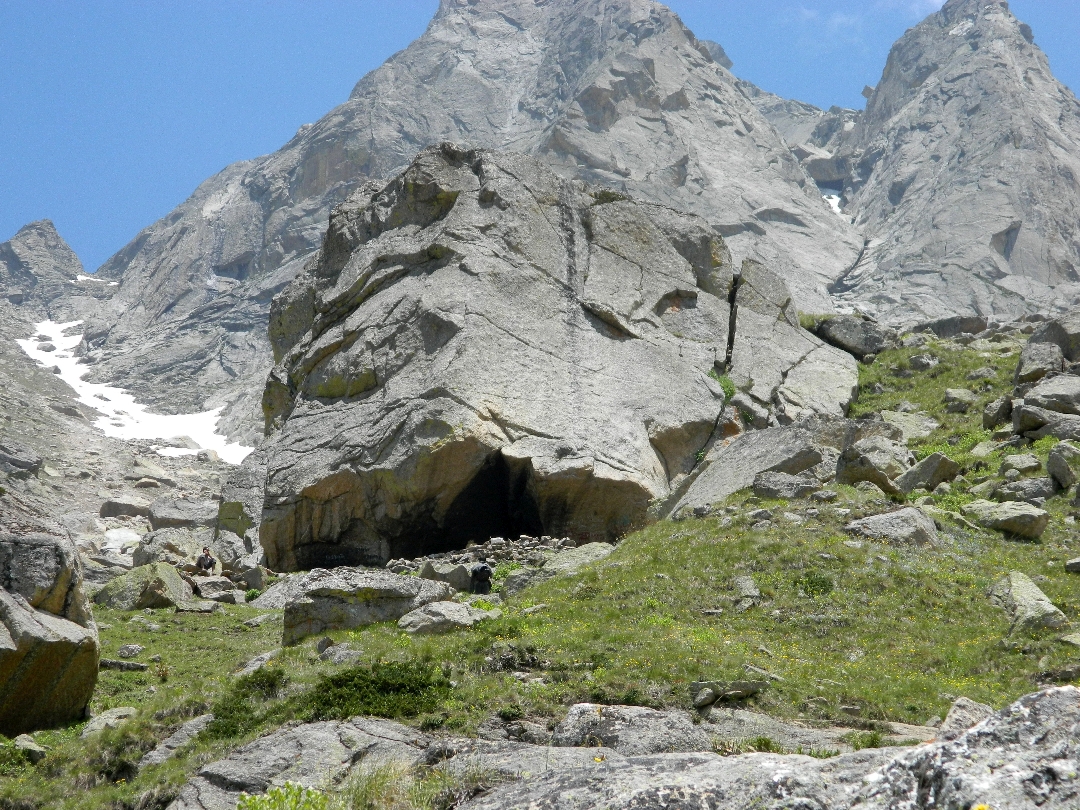
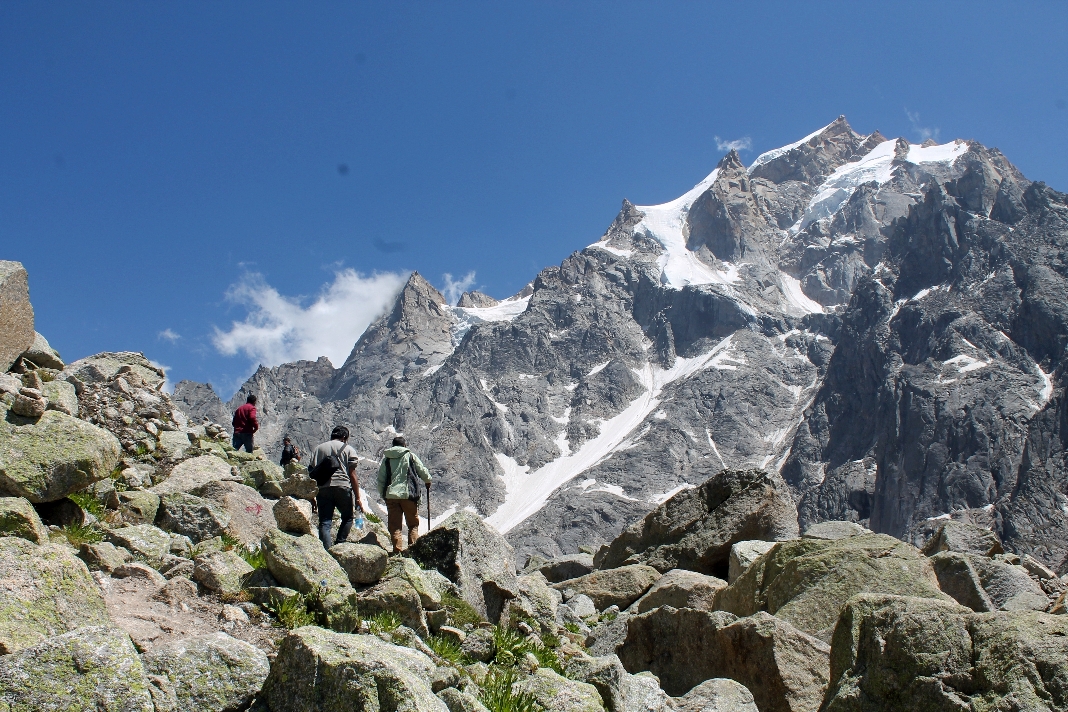
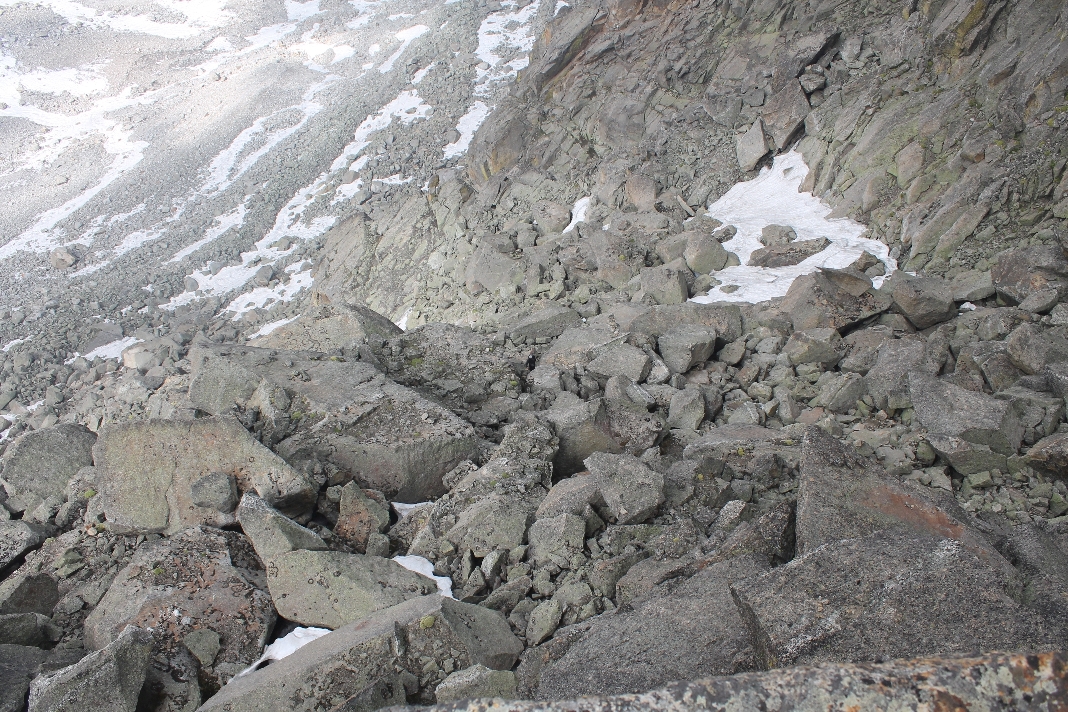
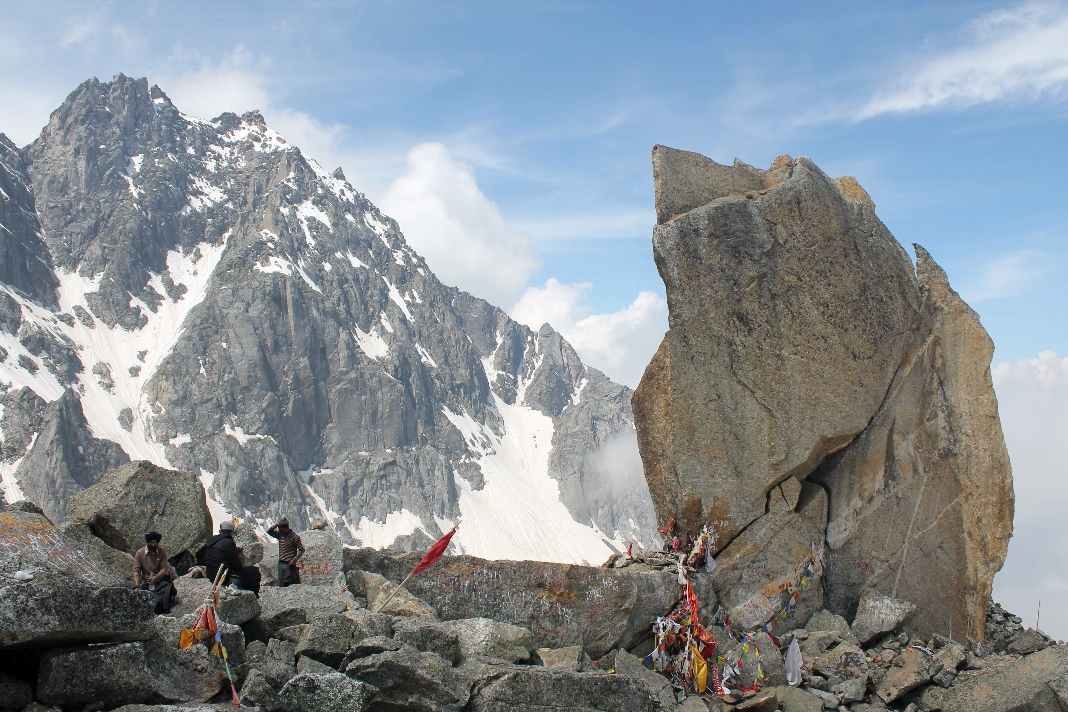
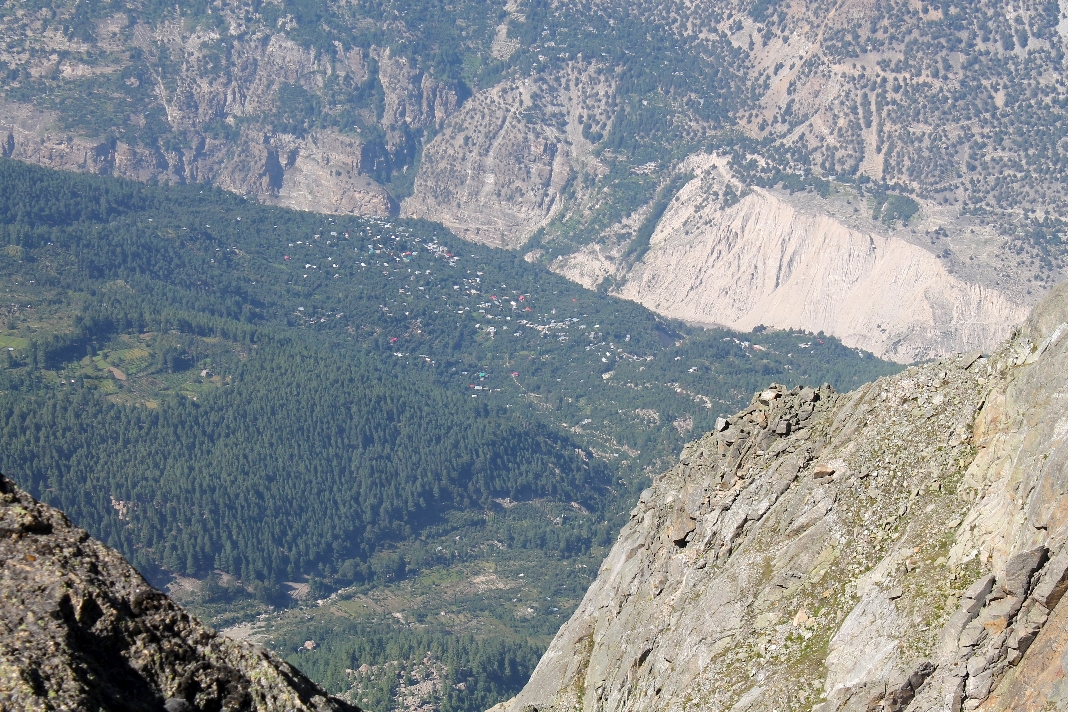
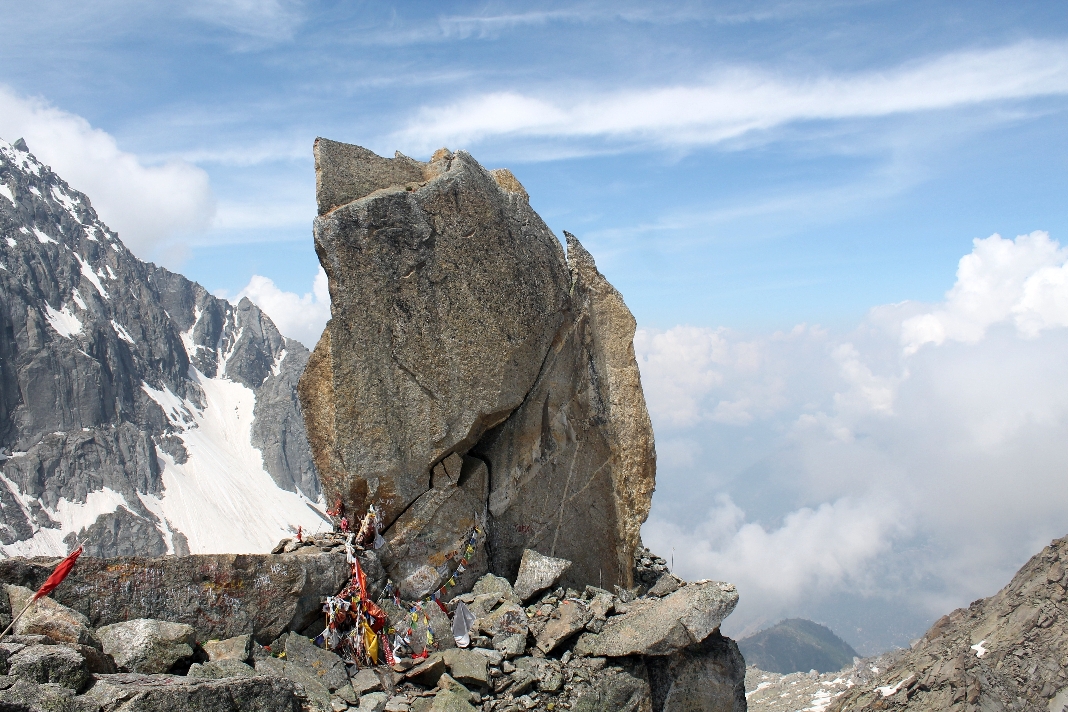
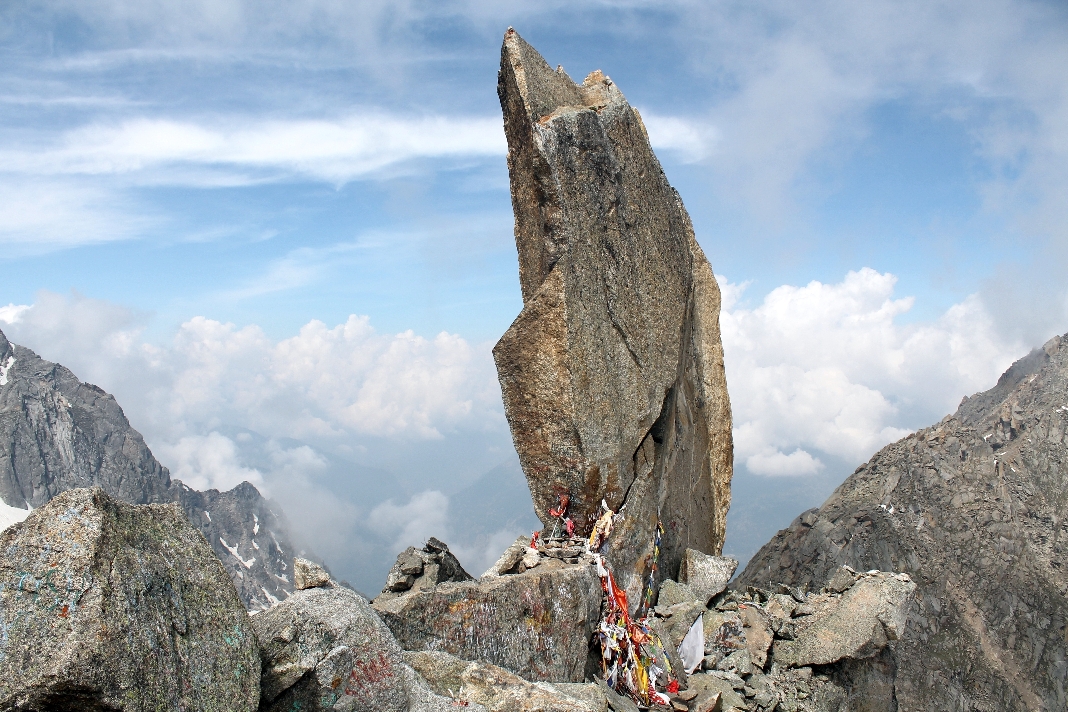
If you manage to reach the Gufa (a big cave shelter that serve as a base camp for Kailash Yatra pilgrims) milestone on the same day, the climb will be less straining on the body as you get more time to take a breather — which you must take frequently considering the thin air and imposing boulders blocking the route.
The Ribba-Fuliach Kanda route to Kinner Kailash is a shorter but treacherous than Tangling-Gufa route. The trail gradually ascents from Ribba village and meet the Tangling-Gufa trail near Gufa.
The Purbani-Kibber Kanda-Dunsarang-Kinnaur Kailash route is the least trodden one. It is used mostly by the shepherds.
Kinner Kailash Trek Departure Schedule in 2025
Our Kinner Kailash Parikrama departures are scheduled for the second week of June and the first week of September. We are looking for a minimum group size of 6 people.
We also can run tailor-made trips for smaller group sizes (i.e. less than 6 people) who are willing to sustain an additional price. The trek dates are subjected to the weather notifications and the guidelines released by Kinnaur district administration.
History Behind The Kinners Of Kinnaur
The history and origin of the word Kinner — with respect to the people of Kinnaur — is still debatable. Kinners of Kinnaur finds mentions in all religious and mythology texts — except Rig Veda — like Rajtaringini, Amarkosha, Matsya Purana, Ramayan, Mahabharata, Shiv Purana, and Vishnu Purana.
In this anthology of epics, Kinners are revered as a distinct tribe who are demi-gods—partway between men and gods.
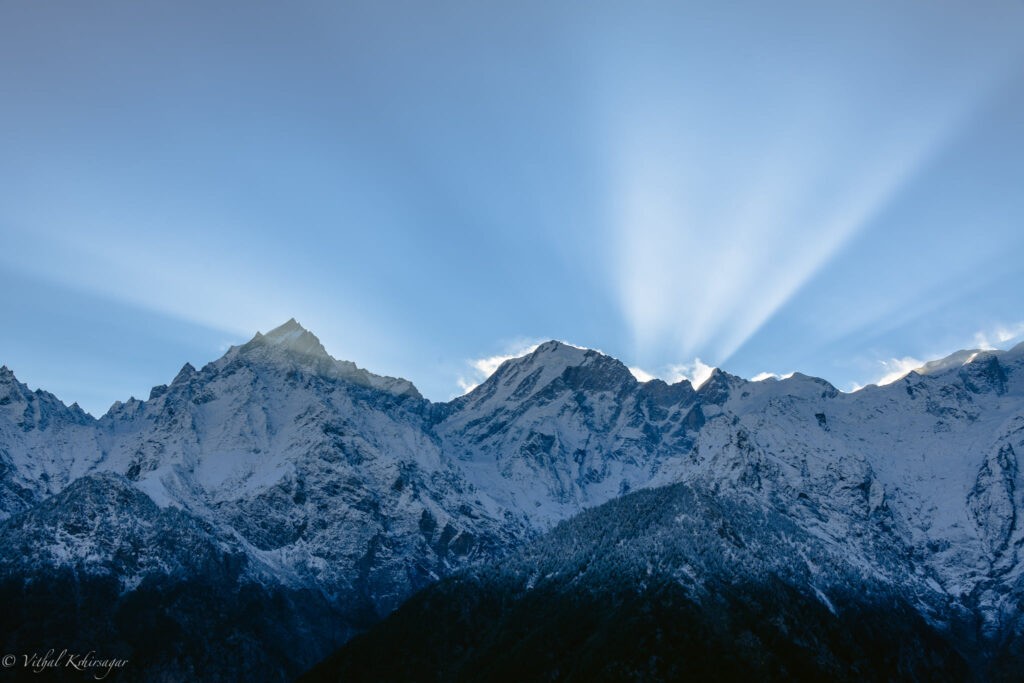
The celebrated poet and sage Kalidasa has written extensively about the Kinner people of Kinnaur. In Meghdoot — a masterpiece in Sanskrit literature — Kalidasa has described Kinners as pretty people with mellifluous voices who sung and danced at Lord Kuber’s royal court.

Kinner or Kimpurush are children of the God. To visit this country means to visit Devaloka. Over the year, the word Kinner itself got corrupted to Kinnaur. There were many routes to reach here. The most followed route since the prehistoric times began from Kalsi, on the banks of the Yamuna. At Kalsi, there is still a stone inscription of the king Ashoka. Today people don’t take this route to reach Kinnaur, but the people of Kinnaur have not forgotten Kalsi; Even now in winters they reach there with their thousands of sheep and goats.
from Kinner Desh Main by Rahul Sankrityayan
Following the June 2019 incident that occurred near Sorang (Parvati Kund), the Kinnaur district administration under Himachal Pradesh Miscellaneous Adventure Activities Rules 2017 has mandated the permit for every trekker wishing to register for the Kinner Kailash Yatra.
As per Himachal Pradesh Miscellaneous Adventure Activities Rules, 2017 any trekking activity in the district has to be carried out with prior permission from the tourism office and camping permission of the trek is to be obtained from the forest department.
— Deputy Commissioner, Kinnaur
Kinnaur Kailash Parikrama (Charang-La) Trek, 2025

Parikrama(circuit) is the rite of circumambulating — called Pradakshina in Sanskrit — in a clockwise direction of religious images/symbols. It is an integral part of Hindu and Buddhist religious practices.
The Charang-La pass is at an altitude of 5300 m whereas the holy peak of Kinner Kailash (Shivling) is at an altitude of around 4500 m. Clockwise circumambulation, or Parikrama, is done around the holy peak of Kinnaur Kailash. The trek starts from Charang village.
What is the trek Cost?
Kinner Kailash trek (circuit) price starts from 20,000 INR. A multitude of variables will influence the final price, including group size, pick-up location (Chandigarh or Shimla), departure date (pre-monsoon in June or post-monsoon in September), and add-ons such as backpack offloading, gear (crampons or gaiters), accommodations before and after the trek, and drop-off location (Shimla or Chandigarh). Shoot us an email if you’re interested in group or early bird discounts. The cost of the Kinnaur Kailash Shivling trek will be determined by the same variables.
⚡ Kinner Kailash Trek 2025 Rundown
| Region | Kinnaur, Himachal Pradesh |
| Duration | 6 days and 5 nights |
| Difficulty level | Moderate to challenging |
| Apex Altitude | ~ 5300 m |
| Best Time To Trek | May to early October |
| Trail Length | ~ 30 km |
| Departure Dates | In June, July and August month |
| Group Size | 10 |
| Start From | Charang |
| End At | Chitkul |
| Activity | Camping, walking, hiking, climbing, glacier and stream crossing, boulders and scree slope crossing |
⚐ Brief Itinerary of Kinner Kailash Trek
- Day #1: Shimla – Charang village (altitude 3500 m)
- Day #2: Acclimatization at Charang. Village walks and a visit to the Rangrik Tsungma monastery.
- Day #3: Charang village – Lalanti meadows.
- Day #4: Lalanti meadows – Base Camp of Charang La
- Day #5: Base Camp of Charang La – Charang La Pass – Chitkul
- Day #6: Chitkul – Shimla.
Kinner Kailash Circuit Detailed Itinerary
The landscape of the area varies from the lush green scenic valley of Sangla to the snow-clad mountains of the Kinner ranges. This trek is packed not only with some of the best views of the mountains, but also provides an insight into the rich history of trade, religion, and diverse ethnic groups, the experience of which leaves one enchanted.
Day 1: Shimla to Charang
Reception at Shimla and drive from Shimla to Charang via Kufri, Narkanda and Reckong Peo. The drive from Shimla to Charang is a beautiful and scenic village with breathtaking views of the Phawarang peak (6050 m) and the Rangrik range. Reach Charang by evening and the stay would be arranged either at a Homestay or rented accommodation.
Day 2: Acclimatization at Charang.
Village walk and a visit to Rangrik monastery and last ITBP post on the Indo-Tibetan border. Explore the places around Charang and pay a visit to the Rangrik Monastery. Overnight stay in the village homestay or camping.
Day 3: Charang–Lalanti
Today we trek from Charang to Lalanti. Initially, the climb will be steep for 2-3 hours till we reach Charang Kanda. After reaching the Kanda gradient is low till Lalanti. Lalanti is a place with many wildflowers and beautiful meadows. The place is beautiful with flowers and blue sky and the roaring sound of rivers. Camp for the night beside a stream in Lalanti.
Day 4: Lalanti – Base Camp of Charang La
Trek to the base camp of Charang La today. The climb is relatively steep today and we will reach the base camp by evening. Dinner and overnight stay in tents.
Day 5: Base Camp of Charang La – Charang La – Chitkul
Today we start early and climb steeply to Charang La. The view of the Kinnaur range is spectacular from this point. We pass Charang La and descend down to Chitkul village. Overnight stay in the village.
Day 6: Chitkul– Shimla
Chitkul is the last village on the Indo-Tibet border. We can explore the places around Chitkul like Nagasti ITBP post and Ranikanda meadows. Drive back from Shimla with a bag full of lifetime memories.
Kinner Kailash (Kinnaur) Circuit Trek Map
View on Google Maps

Kinnaur Kailash Trek Cost Includes.
- All arrangements for overnight stays during the trip.
- Camping and Climbing gear.
- All food expenses
- Food will usually consist of morning breakfast, lunch, evening high tea, and dinner.
- All food will be vegetarian.
- Trained and certified guides trained for emergency situations.
- Local guides and workers with in-depth knowledge about the local area.
- One luggage per person will be transported by us.
- Inner line permits and arrangements en route will be arranged by the operator.
- All stays and lodging on a twin sharing basis shall be provided.
Cost Excludes
- Any kind of personal expenses.
- Camera fees or any other costs arising out of unforeseen circumstances and situations beyond our control
Besides good planning, logistics, food, and good equipment, packing a backpack and carrying essential things play a key role in the success of an expedition.
Are You A Match For Kinner Kailash Circuit Trek?
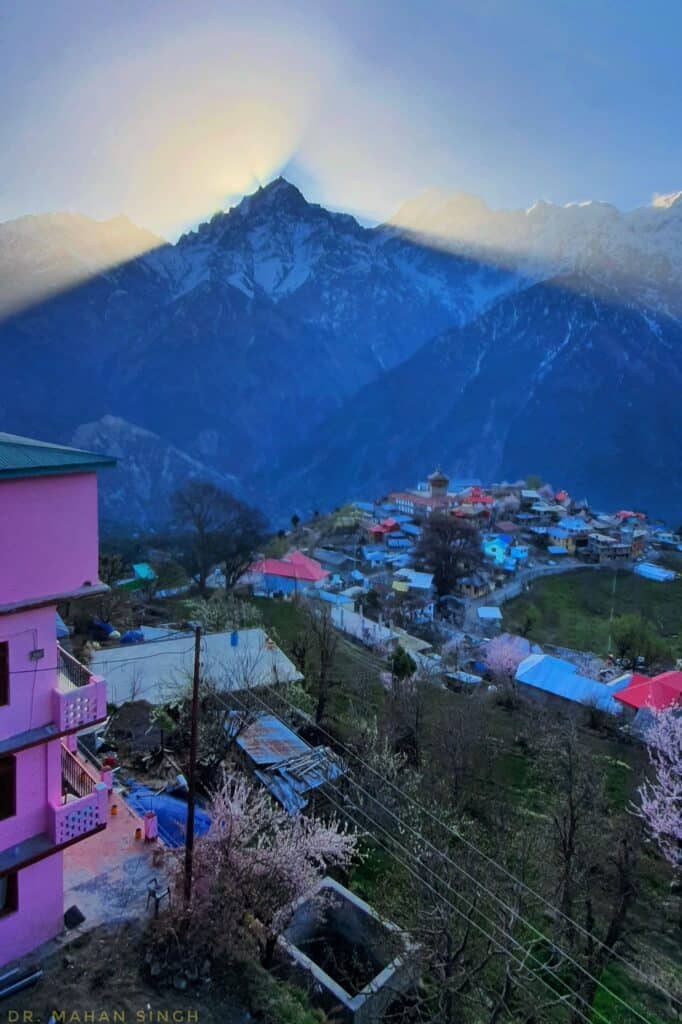
You must have done at least one high altitude trek before. Those who do not have the requisite trek experience of high-altitude passes should not apply.
You must be physically fit to do the 4-day Himalayan trek. The Kinnaur Kailash circuit trek leads you up to 17,400 feet high pass of Charang-La and through a long expanse of Charang-La glacier.
At this altitude, the air is thin, and the rigors of the mountain can grind you down. You must give yourself sufficient time to prepare yourself for the trek.
NOTE: Trekkers are required to bring a medical certificate deeming them fit for high-altitude trekking at the start of the trek.
Backpack carrying: A porter will carry your backpack, please do not bring extra items but only the essentials needed for high altitude trek. Besides detailed planning, taking care of all the logistics, food, and good equipment, packing a backpack efficiently and carrying essential things play a key role in the success of an expedition.
Bare Essentials For Kinner Kailash Trek
- A pair of good quality waterproof trekking boots.
- Three pairs of socks.
- Two pairs of waterproof hiking pants.
- A pair of shorts
- Two pairs of fleece jumpers.
- Two pairs of thermal tops and bottoms
- One down jacket.
- Headgear (1 beanie/skull cap, 1 buff, and 1 trekking cap).
- A pair of thick gloves
- Personal hygiene essentials (alcohol-based gel, hand sanitizer, soap, towels, toilet papers, baby wipes, etc.)
- UV-block sunglasses.
- First aid kit.
- Water purifier and filtration bottle.
Trek FAQs
No. Shirkhand Mahadev Yatra route is located in outer Siraj region of Greater Himalayan National Park of Kullu district, whereas the Kinner Kailash Yatra route falls completely in Sairag (Kalpa) valley of Kinnaur.
First you need to reach Reckong Peo, the administrative HQ of Kinnaur district. You can take any one of the three routes from Reckong Peo.
Tangling village-Gufa-Kinner Kailash Shivling route.
Ribba village-Fuliach Kanda-Dunsarang-Kinner Kailash Shivling route.
Purbani village-Kibber Kanda-Dangloden Campsite-Kinner Kailash.
Kinner Kailash (6050 m) is a holy peak towering over the Kalpa (called Sairag by the people of Kinnaur) valley of Kinnaur. You must have previous climbing/mountaineering experience to reach the apex of Kinner Kailash peak. However, the trek to Shivling pillar, located below the 6050 m high Kinnaur Kailash peak, is doable (not recommended) even if you have no prior trekking experience.
The yatra dates of Kinnaur Kailash are officially announced (for a period of 4-5 weeks) by Kinner Kailash Yatra committee after consultation with the local administration. One can’t go for yatra before or after the time window approved by the administration.
However, the Kinnaur Kaliash Parikrama (circuit) trek is doable from May-September month period.
Kinner Kailash peak is named after the Kinner tribe — the people of Kinnaur. There are many mythological connotations attached to the word ‘Kinner’. You would find a mention of ‘Kinners’ in almost all major Hindu religious texts and epics. In these texts, the Kinners are described as a tribe of great singers and dancers living in the Himalayas.
Artists of India and Central Asia made sculptures of the Kinner tribe during the ancient and early medieval period. Cave 1 of Ajanta caves is dedicated to the Kinners. During this period, the Kinner tribe was spread from Bhagirathi valley of Uttarakhand in the east to the source of Chandrabhaga river in the west.












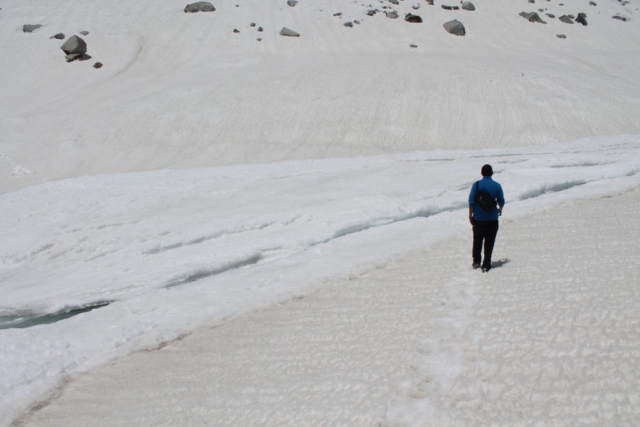
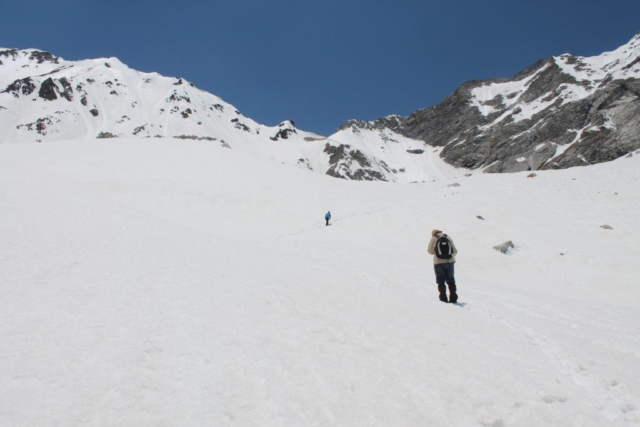
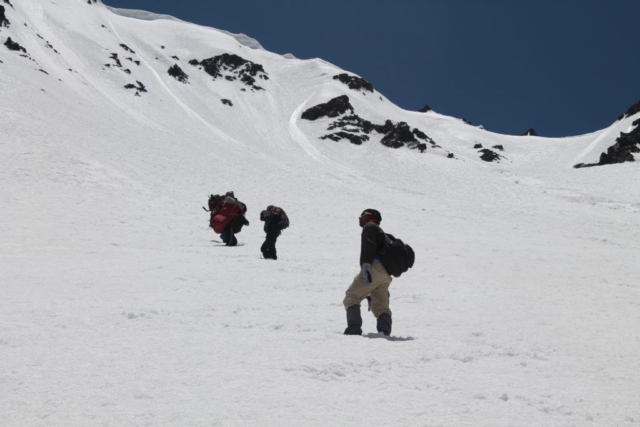
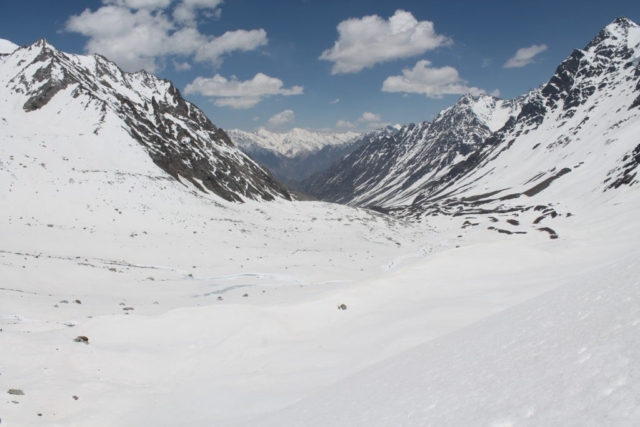
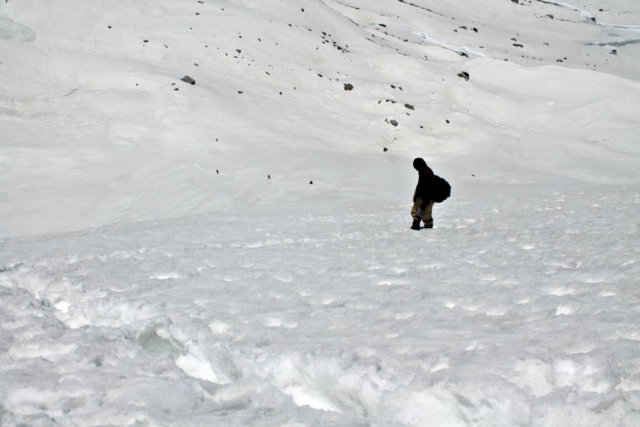
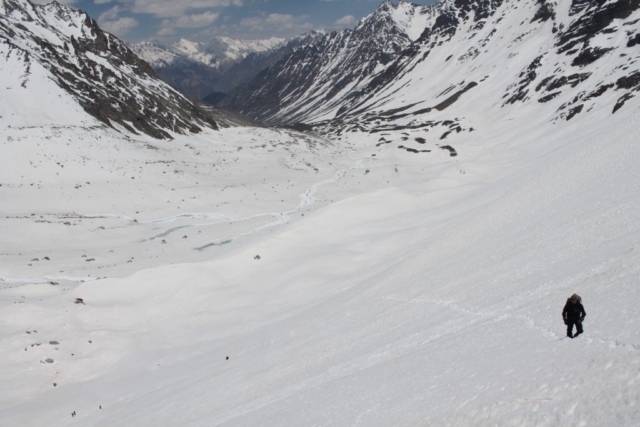
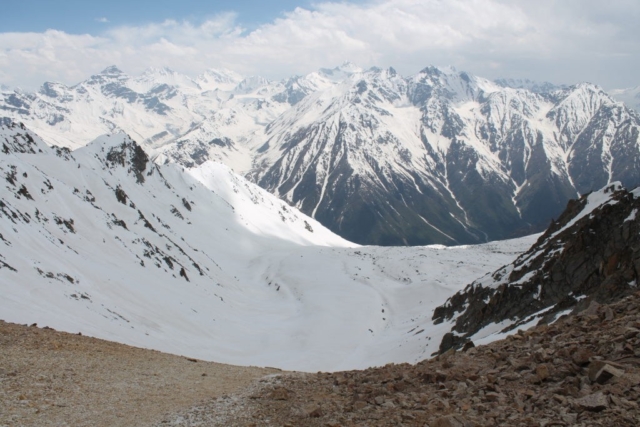
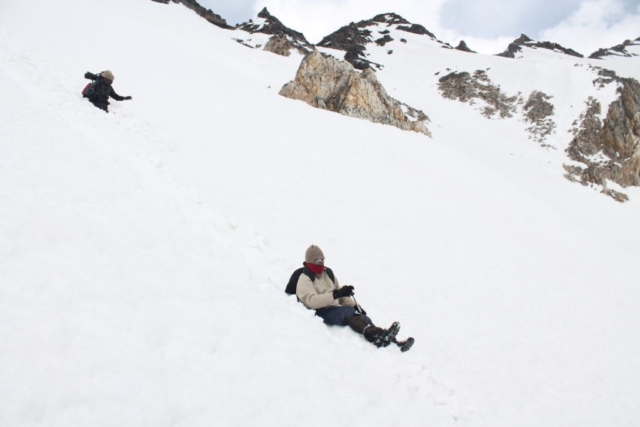
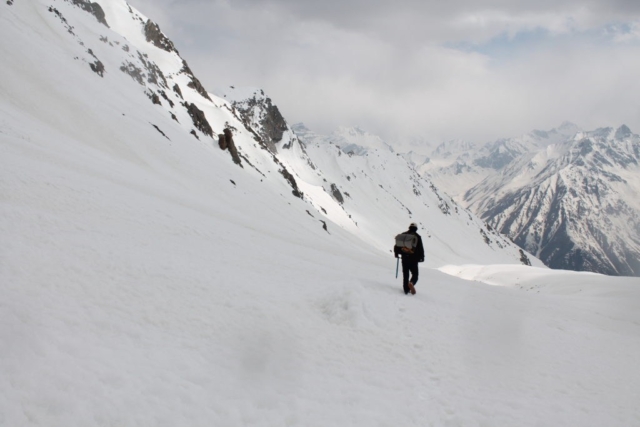
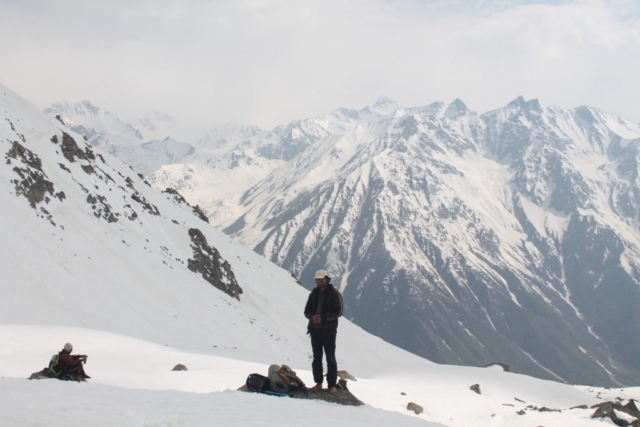
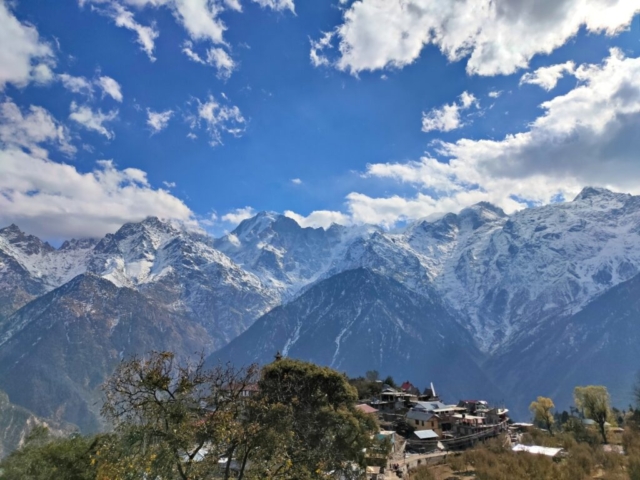
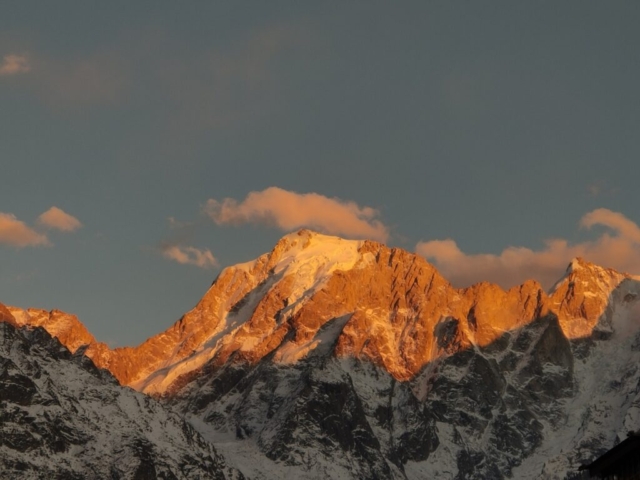
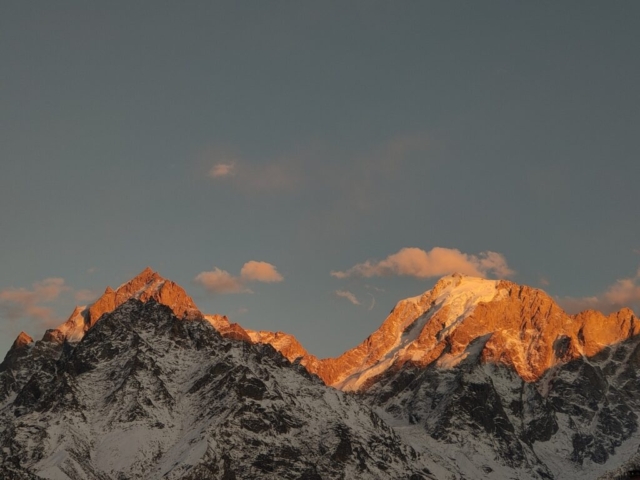
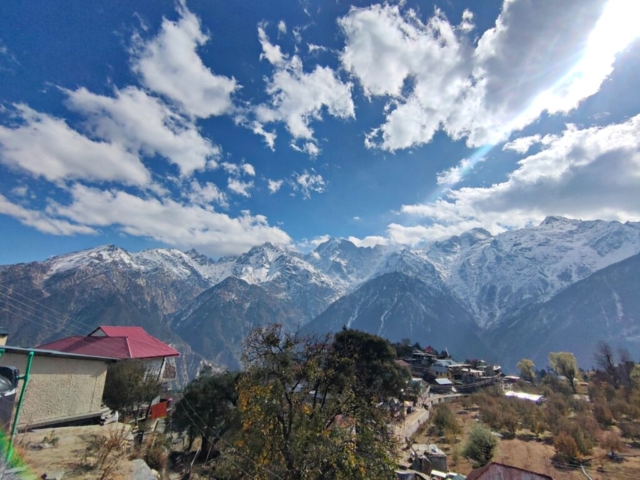
Leave a Reply